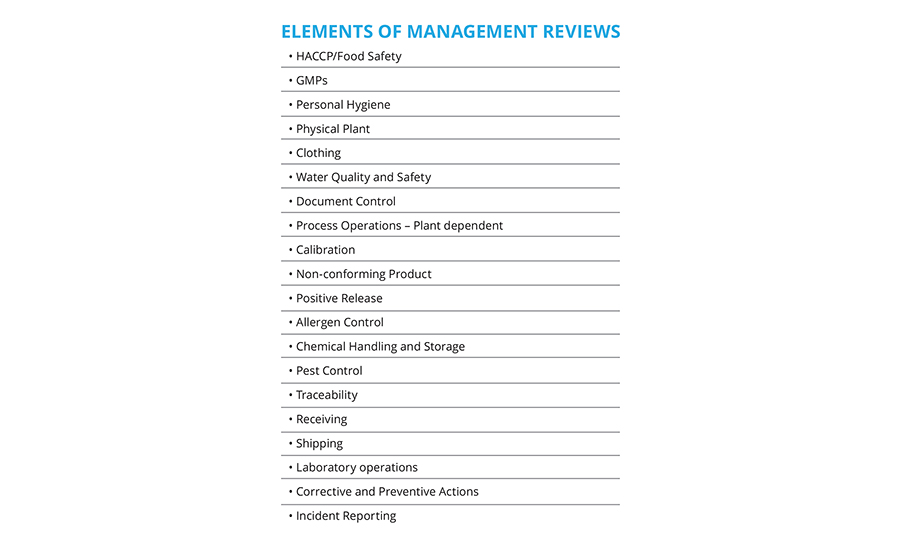Can Going Green Affect Food Safety?
Well-developed, documented and maintained food management system mandates are the key to ensuring food safety when incorporating sustainability measures.

There are no guarantees when it comes to changing your operations, like becoming more sustainable, and maintaining food safety. But there are steps to mitigate the risks. Photo courtesy of Getty Images / zhongguo
A commitment to the environment or “going green” has become an integral element of doing business around the world, and that includes the food business—from growing and husbandry through food handling to processing and distribution, including at grocery stores. New construction is often done with the goal of meeting the LEED requirements or being a facility that is carbon neutral. LEED, or Leadership in Energy and Environmental Design, is a global rating system for building green structures. LEED was established by the U.S. Green Building Council (USBGC) after the organization formed more than 25 years ago. Today, LEED is the most widely used green building rating system in the world.
Processors are also seeking alternatives to plastics that are fouling the environment despite recycling efforts. They are also looking to adopt packaging and other processing aides such as filters that are biodegradable or compostable. But one looming question is, “Will going green compromise food safety?” The answer should be “no,” but there are no absolutes when it comes to food processing and handling.
So, why doesn’t going green compromise food safety? The answer may be found in the basic principles of Hazard Analysis Critical Control Point (HACCP), and ensuring that the processors, handlers and others have well-developed and properly maintained HACCP programs. An integral part of today’s food processing industry is the mandate that processors have a well-developed, documented and maintained food safety management system and that their facilities have been audited to verify that the food safety programs are effective. Many buyers demand that the audits that are conducted are one of the Global Food Safety Initiative (GFSI) audit schemes that incorporate many elements found in the ISO 22000 food safety standard or “Food Safety Management Systems—Requirements for Any Organization in the Food Chain.”
The elements that each of these food safety management systems should have in place to ensure changes to a more green or sustainable operation are the following:
- Management Review
- Change Management
- Verification
Management reviews are designed to provide top management (plant manager, general manager, etc.) with insight and input into all programs essential to producing safe, wholesome and high-quality foods. These include prerequisite programs, the food safety program, food defense and production operations. Management reviews should be held at least once a year. The review should be led by top management at the facility and should include the management team. It should include, at a minimum, all of the elements in Table 1. The primary objectives are twofold; review existing programs and developing programs to ensure that the food safety management system and process operations are constantly updated and improved, so any green improvements should be addressed at the management review. The end result of the meeting should be a prioritized list of improvement plans.

TABLE 1 ELEMENTS OF MANAGEMENT REVIEWS
The next step in the process is change management, a program designed to ensure that any changes made to the operation—including all equipment purchases by the operation, changes to operations or any changes made to the physical plant—will not adversely affect the safety, quality or wholesomeness of the products manufactured in the facility. In addition, the change management team will also review costs and potential return on investment. There are operations that appoint different management personnel to serve as the change management team, whereas others select a group to evaluate the potential changes on as needed basis. A company’s change management program might include the following:
- The president shall assign staff to research equipment or materials that may meet the needs of the plant.
- The president and/or plant personnel shall contact the appropriate vendors and request specifications and pricing for equipment or materials.
- The team in Step 1 shall review specifications and pricing and rate the materials. Notes of this meeting shall be maintained. The team shall also utilize risk assessment to evaluate how the potential change will affect food quality, safety, sanitation operations and the food defense program. If the team determines that the change will pose a significant risk to operations, the project will be modified to ensure safety or cancelled.
- Once the group has decided on the equipment/materials, the president or a designated individual should make an effort to visit one or more facilities that are using equipment or materials to evaluate performance. Noted from the trip shall be prepared and filed.
- This plant must also discuss potential new purchases with food safety and quality staff and/or consultants. They will share specifications and ask advice on installation and possible weakness in the systems.
If the change management team’s evaluation indicates that the change may be made without adversely affecting operations, that report shall go to top management who will sign off on the change.
There is a final step in the process, and that is verification. The plant will take the following steps to ensure that the change does not create problems:
- During installation of equipment or when the change(s) are made to the physical plant, plant personnel shall take all precautions to ensure that operations are not compromised. This may include, but need not be limited to, suspending production, curtaining off areas to segregate production and warehousing from construction or moving production to another facility.
- During startup of the equipment, the team shall closely observe operations and the effects on product quality. They shall take measurements of different product quality parameters and conduct microbiological tests on the product as needed.
- If any problems are observed during startup and shakedown, plant personnel shall work with the vendor to correct any problems or issues that are observed.
- The HACCP/Food Safety Team shall also evaluate the changes to determine whether the changes have any effect on food safety. The results of this meeting and any actions shall be recorded in the HACCP manual.
So, ideally, any change that can help a food processor become greener should be evaluated within the context of the food safety management system, but will each and every company demonstrate such due diligence? Probably not. So, are there potential changes that a company might make to become greener or more sustainable that could adversely affect food safety. Yes, there are. Let’s look at examples of how going green might backfire on a company.
Power fluctuations can cause problems with a food safety program, especially with metal detectors or other monitoring devices. When setting up a metal detector, it is imperative that the power source and connections be stable, that is, make sure that there are no loose cables. Lack of a stable power source can adversely affect how the detector performs.
The global concerns about plastic contamination, especially microplastics, are pushing many food processors to move away from plastic containers. Processors are returning to glass bottles, and the public is seeing more aluminum containers, especially with beer, seltzers and water. These are solid and safe replacements, although a switch to glass will mean that the processor will need a more rigorous glass and brittle plastic program.
One concern, however, will be with companies who decide to switch from plastics to packages that are biodegradable or compostable. Biodegradable means that the packaging will break down and decompose in the environment when subjected to natural biological processes. Compostable materials require a specific setting to break down and break down much faster in this environment. The end result of composted products is soil. Look to the recycling program in your own town. There are containers for recyclable materials and, oftentimes, one for compostable materials. The company that elects to adopt biodegradable or compostable packaging need to conduct the necessary packaging stability studies to ensure that products themselves do not compromise the new packaging system.
Another element of the green movement is water usage. Food processors are always looking at ways to reduce water usage. Consider how many ways water is used in a plant; an ingredient, cleaning and sanitizing, waste disposal, handwashing, and others. When looking to save water, make sure that the savings do not create problems, especially when it comes to cleaning and sanitizing. Water removes gross soils, carries both the cleaning chemicals and sanitizers and is used to rinse equipment after cleaning. If the goal is reducing water for cleaning, make sure that any procedure that reduces water usage is properly validated.
The only real food safety issue that the author has seen resulting from going green did not occur at a processing facility but with consumers and grocery stores. There is a movement across the country to eliminate single use plastic grocery bags. Consumers now use reusable bags to bus their groceries. What has happened is that the reusable bags have become contaminated and caused foodborne illnesses. The bags were apparently contaminated by raw chicken, not properly cleaned and then contaminated a ready-to-eat product.
So, going green could possibly compromise food safety, but the probability of that occurring with a food processor or handler with a well-documented and well-maintained food safety management system (HACCP) should be very low.
Looking for a reprint of this article?
From high-res PDFs to custom plaques, order your copy today!







